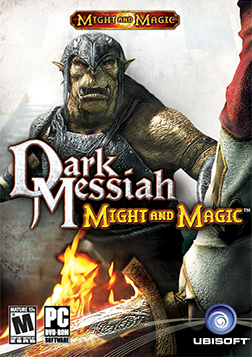Sometimes gamers just want to play through a story. While multiplayer is fun and open worlds are immersive, there’s something to be said for just going through a story level by level.

If you’re interested in playing an excellent, linear, single-player game, the ten games below are sure to pique your interest.
Below we are discussing the top 10 single player linear video games (according to out opinion), so let’s see them below.
1) Halo: The Master Chief Collection
Halo: The Master Chief Collection is, at this point, way more than just a game. Sure, it’s got a robust multiplayer community but it’s really a huge collection of Bungie’s original Halo games.
If you have any love for these almost-retro shooters, this is the version of all three games that you want to play for the first or hundredth time.
If you’ve been anywhere near a Microsoft machine for the last two decades, you already know the gist of the Halo story.
You know Master Chief, Cortana, the Covenant, and the rest. What’s great, though, is that the Collection allows you to play through all the games with modern graphics.
This allows for many of the design decisions to shine as players go through an absolutely massive, multiple-game arc.
While Halo might have left this kind of design in favor of an open world with Infinite, the Collection is still an old-school hit.
2) Dark Messiah of Might and Magic
What if the Elder Scrolls games actually forced you to play the main story?

That’s the question that it feels like Dark Messiah of Might and Magic asks, throwing players in a magical, medieval world that’s full of danger and intrigue, but that also requires players to actually go forward with the story instead of joining guilds and delving into random dungeons.
While it might not be as big of a game as its better-known competitors, it’s nonetheless quite a bit of fun.
Players take on the role of a character named Sareth, an apprentice who also has a bit of a special destiny. Players follow him along his journey as they come up with a host of ways to dispatch enemies and solve puzzles, largely moving through different and impressive environments as they go through the story.
If you always find yourself getting sidetracked in bigger games, you might enjoy this more straightforward experience.
3) Metro 2033
Metro 2033 almost feels like it’s the narrative answer to Fallout 3 or 4. Rather than taking place in a huge world that players can explore at their leisure, players instead are stuck in a post-apocalyptic Russian subway system and only really allowed to move in ways that the plot demands.

The end result here doesn’t feel restrictive, but rather it feels like it provides more support for the player.
Metro 2033 is the first of a series of games, but in many ways it’s the one that matters the most to those who like a more traditional linear experience.
Even keeping players underground makes a lot of sense here, as it limits the feeling that the player is being forced to move only in certain ways.
If you care more about story than exploration in your post-apocalyptic worlds, this might be a great fit for you.
4) Deus Ex: Human Revolution
Deus Ex: Human Revolution is a latter-day sequel to the more open-world Deus Ex games.
Putting the game into a more linear context works wonders, though, as players are given a chance to really dig into Adam Jensen’s story and to see the parts of the future world that help best tell the story.
The game still features the same kind of freedom of choice that made the first game stand out, but with a much tighter focus.
Instead of a true open world, Deus Ex has a single hub world from which you can travel to different levels as the story progresses.
Each of these levels is like its own little open world, but you’re still largely moving from one point to another as the narrative unfolds.
This game is a great linear experience because it still allows for exploration and innovation, just in a way that won’t overwhelm the story that the developers tried to tell.
5) Alan Wake
Some of the best single player narrative games of all time have been horror games. Alan Wake eschews most of the monsters that are found in typical horror, though, and deals with a fear that’s a little closer to reality – a fear of the dark.
Taking on the role of a writer who’s sucked into a world that seems to be eerily inspired by fiction, Alan Wake allows players to play around with light and dark in a way that’s really rare in games.
Alan Wake is nothing if not stylish. While it’s very easy to get sucked into the narrative, it’s also important to step back and look at how well the game itself is designed.
You’re constantly ushered from one location to another, making use of novel new ways to keep the dark at bay while you try to escape the shadows.
Every bit of this game shines because players never really get a chance to get off of the very well constructed rails.
6) Titanfall 2
If you’ve only played the first Titanfall game, Titanfall 2 probably isn’t what you would expect to see on a list of linear video games.

The first game in the series was a solely multiplayer affair, but the single-player campaign in the second game gives players a great chance to jump into a fully-realized world and to play through something that is an awful lot like a very traditional first-person shooter – though in this case, that shooter also features some great mech combat.
Titanfall 2 isn’t just a game for fans of gunplay, though. It also features a surprisingly nuanced and emotional story that benefits from the tighter confines of the game.
In fact, much of this game works because players are meant to be constantly moving forward. If you’re looking for a great mix of action and story, this might be a game for you.
7) Dishonored
Dishonored is an interesting game that features the hub-world design that’s very common in modern linear games but that still requires players to go through a story in a very straightforward manner.
That’s probably the only straightforward thing about this game, though, as it features a fairly twisty narrative that also allows players a great deal of choice in how they’ll deal with the various levels of the game.
Players take on the role of a royal protector turned outlaw who is forced to strategically eliminate certain members of a conspiracy in order to save the crown princess.
Players get to make use of not only careful environmental exploration and observation, but also a host of mystical powers.
The game and its sequel give players plenty of room to explore, but each stage of the story takes place in distinct levels that allow players more of a chance to experience the narrative in a direct manner.
8) Bioshock trilogy
The three BioShock games are some of the best examples of linear gameplay. While the first two games do feature something of an open world in that a great deal of back-tracking tends to be available, there’s still a sense of linearity to them due to certain story events.
The third game, Bioshock: Infinite, is quite a bit more linear in nature and the game actually benefits from that fact.
All of these games guide players from one area of another with a series of story-based breadcrumbs, but it’s the story that really stands out.
The first two BioShock games take place in the underwater city of Rapture, while the third takes place in the flying city of Columbia.
All three games focus quite a bit on the meaning of choice and free will, with tough moral choices to be made along the way.
Not having an open world helps the developers to better guide players through the narrative and to make some truly awesome set-pieces in all three of the games.
9) Spec Ops: The Line
Spec Ops: The Line is a military shooter with a fairly significant narrative element.
It plays with many of the tropes that one would see in a more typical linear shooter, offloading a few of the usual elements into the story in ways that really make it stand out.
It’s almost hard to notice that you spend much the game being funneled from one location to another in a very old-school way thanks to the way that the plot moves.
One of the things that makes Spec Ops one of the best modern linear games is that it really lives and dies by every design decision.
There really can’t be a multiplayer mode for this game to make sense, nor can there really be a version of the game that takes place in an open world.
That sense of being constantly propelled forward due to the narrative helps to ensure that this game remains a unique story experience that’s hard to find elsewhere.
10) Tomb Raider reboot trilogy
The Tomb Raider reboot trilogy does, in some ways, kind of stretch the definition of linearity. The first game, for example, does feature a fairly large open world for players to explore.
What makes all three games linear, though, is that there is a set plot that has to be experienced in a very specific order; the second and third games do this with a more traditional linear narrative, but the first does a great job at keeping players on track by the need to learn new abilities.
The Tomb Raider reboot trilogy puts players in control of a younger, less-experienced Lara Croft than the one found in the original game.
The first story is one of sheet survival, while the second and third are about Lara coming to grips with her role in the world.
All three games have solid stories that help to keep the player engaged while still giving players the kind of action that helps to ensure that they’ll play the games more than once.
If you’re looking for plenty of hours of story-based gameplay, you can do a lot worse than this trilogy.
Image Credits
By http://www.gamefaqs.com/computer/doswin/image/929360.html?box=69093, Fair use, https://en.wikipedia.org/w/index.php?curid=19188988
By http://image.com.com/gamespot/images/bigboxshots/1/935091_142836_front.jpg, Fair use, https://en.wikipedia.org/w/index.php?curid=25748819
By MobyGames, Fair use, https://en.wikipedia.org/w/index.php?curid=59886784





